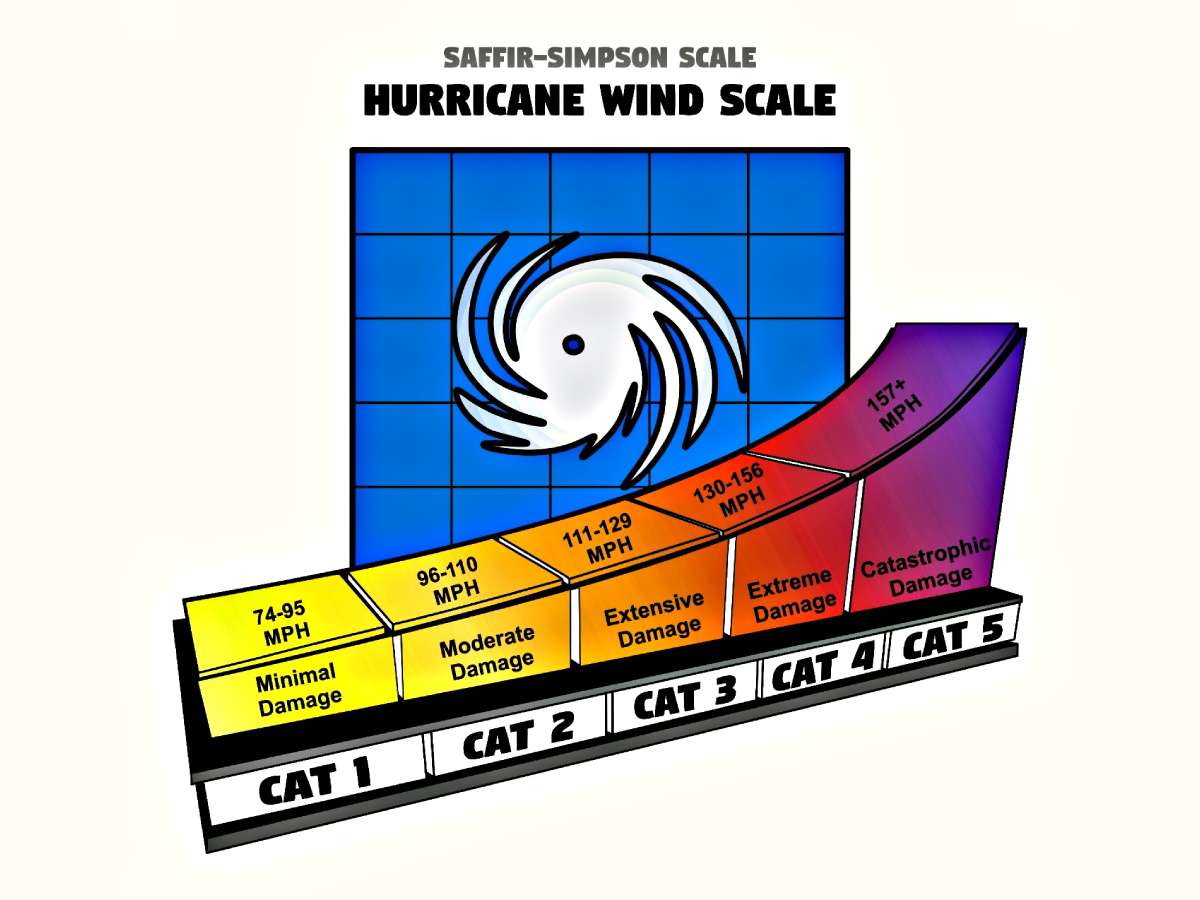How To Make A Temporary Roof
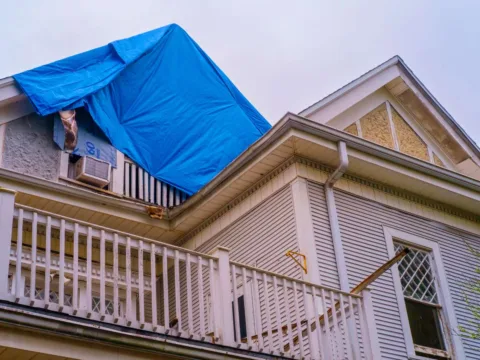
Do you live in an area where there are lots of tornadoes or hurricanes — like I do?
Have you ever had the roof of your house damaged by high winds during a storm? Thankfully, we haven’t… yet.
We currently live in Middle Tennessee (Nashville), which is part of the new Tornado Alley.
Before this, we lived in hurricane-prone areas of Florida. (First, in Orlando. Then, we moved to the tiny little island called Gulf Breeze. Later, we moved inland a bit to Pensacola.)
Tarps For Roof Leaks Are Quite Common
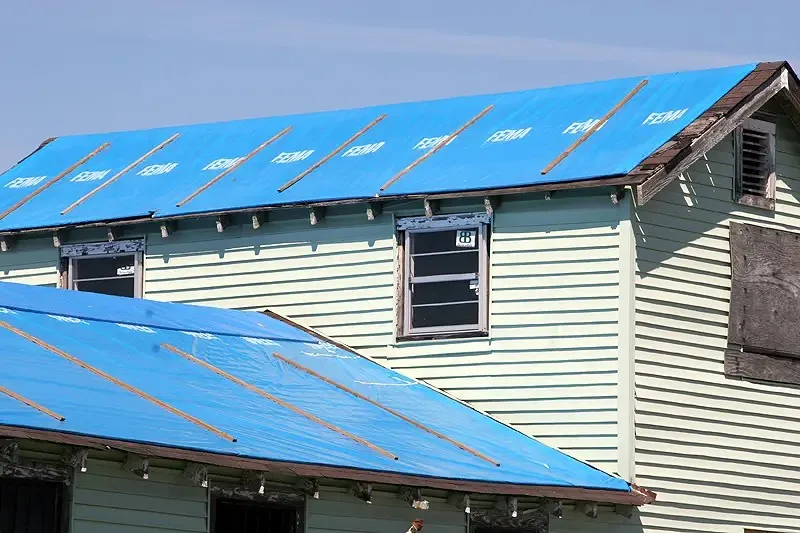
In Florida, roofs damaged by high winds were a VERY common occurrence.
You’d see people tarping roofs after every storm!
But I could never find any step-by-step instructions for making a temporary roof using a blue tarp. And I never understood how the tarp stayed in place on the roof.
That is until I saw some simple DIY instructions showing how to tarp a roof properly in an old issue of This Old House magazine.
I’ve researched this topic a good deal, because I’ve always wanted to be prepared — due to the number of hurricanes and strong storms that blow through Florida and Tennessee.
If you, too, are wondering how to cover a damaged roof with a tarp, here’s the info you’re looking for…
How To Properly Tarp A Leaking Roof
The following information appeared in the March 2005 issue of This Old House magazine. It was in the “Ask This Old House” section, which is similar to “Letters to the Editor.”
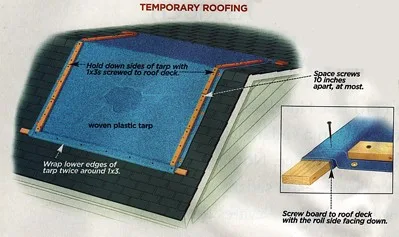
To temporarily protect a storm-damaged roof, here’s what Tom Silva says to do:
Basically, what you want to do is cover the damage with a woven plastic tarp that is held in place with 1×3 wood strips.
Here’s how I do it:
First, I roll one end at least twice around a long 1×3, then screw it to the undamaged side of the roof. The 1×3 “roll’ should be against the roof — so it won’t collect water and debris. The rest of the tarp goes over the ridge and down the other side of the roof several feet beyond the damage.
Then I roll the opposite end of the tarp around another 1×3 and screw it to the roof sheathing, roll side down.
Now, it’s just a matter of using more 1x3s and screws to hold down the tarp’s sides. They don’t have to be rolled in the tarp.
A “blue roof” isn’t pretty, I’ll admit. But it will keep the weather out until someone can repair the damage.
Basically, just like this:
This video from Lowe’s also shows how to patch a roof with a tarp using the methods Tom Silva describes:
Tom Silva does say this type of emergency repair should be left to someone who has the right equipment and skill to do it safely:
Roofs are treacherous, particularly when wet, and tarps are slippery even when dry. You don’t want to be wrestling with one in high winds, either. Better to submit a claim for property insurance than to have your family submit a claim for life insurance.
Using tarps for roof leaks could actually cause more harm than good IF you don’t know what you’re doing:
Here’s how to assess roof damage after the storm.
This next video shows how to tarp a roof yourself, plus he’s got some great DIY tips:
Answers To Your Questions About Tarping Roofs
How long can you leave a tarp on a roof?
Technically, a tarped roof can last close to 1 year. However, 3 months is generally considered the maximum length of time that a temporary roof tarp should serve its purpose — before you will start incurring additional damages and expenses. Sure, tarps are a great solution when you have storm damage and you need to quickly cover the damaged roof for a few days or weeks — until you can afford proper roof repair. However, you don’t really want to leave a tarp on your roof for more than 3 months just to avoid paying to fix the problem right now. Tarping is not meant to be a long-term solution — and a few months with a tarp on the roof is pretty long during the rainy season.
Do you need to use a thicker (higher mil) tarp for a roof leak?
Tarps range in size from 4 feet on the shortest side to 100 feet on the longest side — you simply choose the dimensions you need for the portion of roof you’re covering. Does the weight and thickness of the tarp matter? Yes, but not all that much. For example, a standard tarp is usually 5 mil thick, and this is perfectly fine for patching a roof. However, tarps range in weight/thickness all the way up to 16 mil — the higher the mils, the greater the durability and protection that tarp will provide. Generally speaking, thicker tarps are better during fast wind gusts and frequent storms.
What size of roof tarp should you use?
The general idea is to choose the smallest tarp possible. You want the tarp to extend about 2 feet around the hole on all sides. Why not just play it safe and use a really large tarp? Because then your future roof repair will be even more expensive. Why’s that? Well, all of the shingles that were directly covered by the tarp will all need to be replaced. So will any shingles that you screwed holes into (to hold down the tarp). The smaller the entire “damaged area” of the roof is, the less expensive it will be to fix properly later on. Here’s what I mean.
How much does it cost to tarp a roof?
Professionals charge anywhere from $200 to $1,500 to install a tarp on a roof — that’s for a standard-sized roof about 1,600 square feet. However, if you’re comfortable getting on the roof AND as long as the roof is not too steep, then patching a roof with a tarp is a DIY project that many homeowners can accomplish themselves. Tarps range in price from $8 to $40, depending on the size of the roof damage you’re trying to cover. For example, in the lower thicknesses (mils), cheaper roof tarps range from $8 for a 6×8 tarp to $15 for an 8×10 tarp to $20 for an 10×12 tarp. In the higher thicknesses (mils), better roof tarps range from $20 for a 6×8 tarp to $30 for 8×10 tarp to $40 for 10×12 tarp. Of course, you will also need some 1×3 wood furring strips (typically around $2.50 apiece), along with some screws.
NOTE: They also make self-adhesive roof tarps. These are useful when you don’t have anyone to help you install the tarp on your roof. Personally, I’ve only researched the UTARPIT brand so far — and it looks like people either love it OR they hate it. I can see where self-adhesive tarps might not be as long-lasting as those secured to the roof with screws. But if you’ve only got a smallish hole to cover, I think it would be a great temporary fix! Here’s how to remove a self-adhesive roof tarp.
For what it’s worth, I’ve been reading This Old House for awhile now — thanks to the kindness of friends.
It’s absolutely one of my favorite house & home magazines. It has been for years. But especially now, since we’re planning to build a Log Home soon. (Believe it or not, TOH is even better than traditional Log Home magazines for room design ideas, in my opinion!)
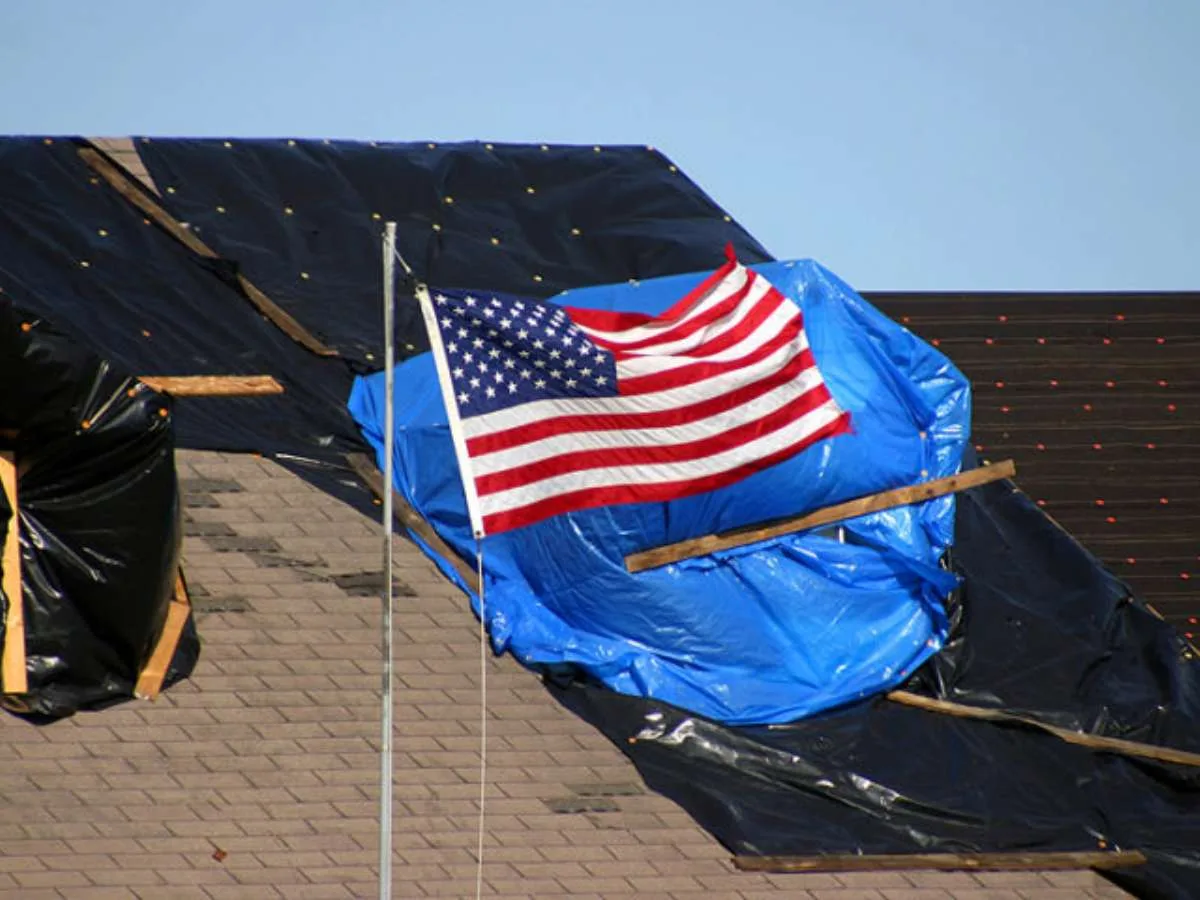
More Tips For Tarping A Roof Yourself
- How To Tarp A Roof Yourself – from Lowe’s
- The Best Tarps For Roof Leaks – they’re mentioned toward the bottom of the article
- Poly Tarps vs Vinyl Tarps For Roof Repairs – see which is the best and most affordable
- Hidden Dangers After A Hurricane – types of post-storm damage to look for
- What Would YOU Pack For Evacuation? – my own $.02 when I lived in Orlando and we were facing an emergency evacuation



